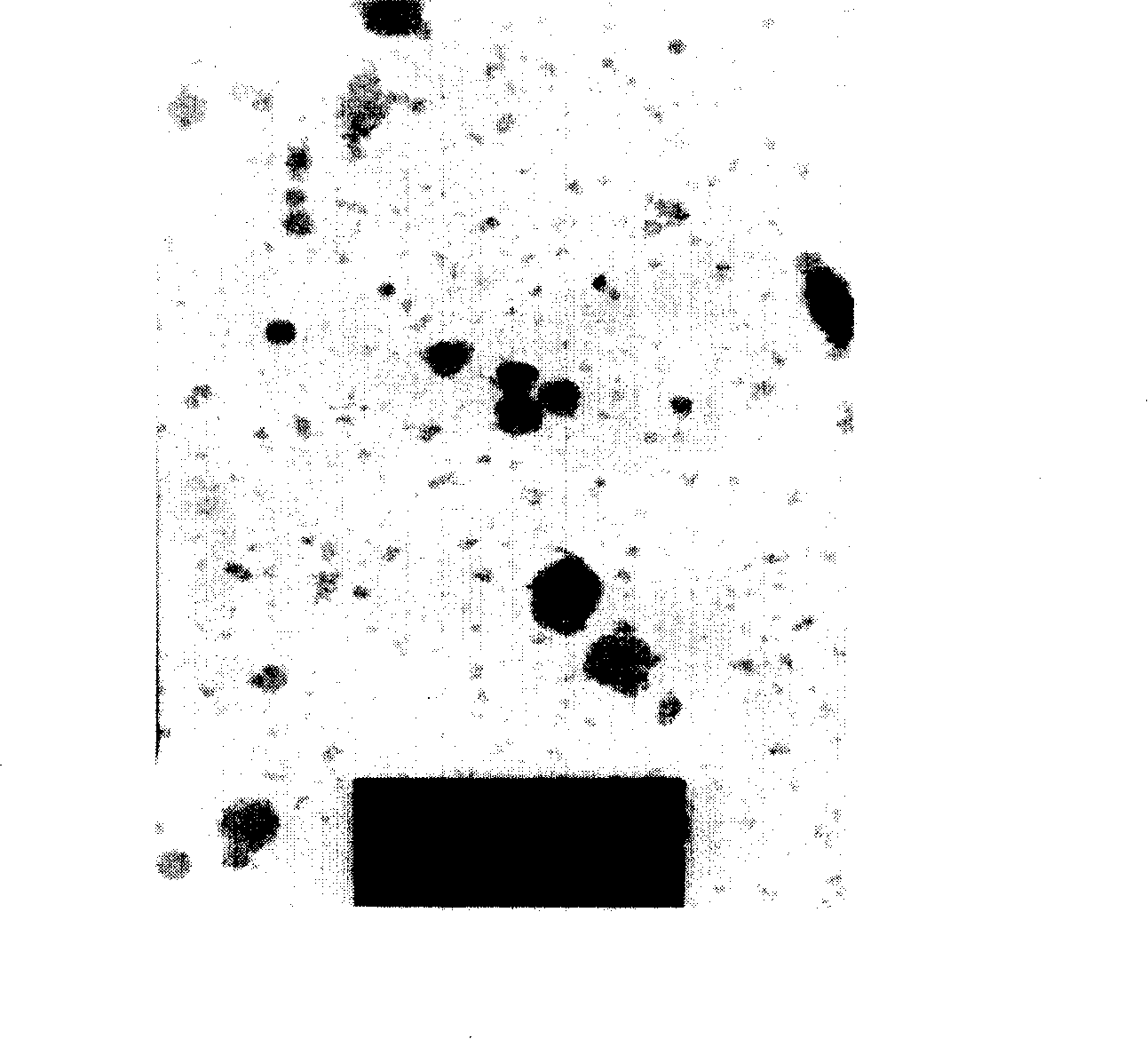Ultra-fine titanium aluminum composite oxide and preparation method thereof
A composite oxide, composite hydroxide technology, applied in chemical instruments and methods, chemical/physical processes, catalyst supports, etc., can solve the problem of small specific surface area, difficult to widely use, and the active anatase type is not stable enough And other issues
- Summary
- Abstract
- Description
- Claims
- Application Information
AI Technical Summary
Problems solved by technology
Method used
Image
Examples
Embodiment 1
[0055] Heat and melt 480g of aluminum nitrate nonahydrate, 18g of titanium tetrafluoride, 192g of urea and 34g of ethanol, drop into a mixture of 207g of 50°C minus four-line distillate and 55g of T-154 bis-succinimide and mix evenly. Then add 14g tetraethylenepentamine and mix well. Under airtight conditions, at a temperature of 150°C, the temperature and pressure were maintained, and the reaction was carried out for 3 hours. After the reaction, wash once with ethanol, then wash with distilled water until there is no negative ion, and centrifuge. Finally, dry at 100°C for 20 hours, then bake at 250°C for 2 hours in air, and finally bake at 550°C for 10 hours to obtain the ultrafine titanium-aluminum composite oxide of the present invention. The obtained ultrafine titanium-aluminum composite oxide has an average particle size of 85nm and a specific surface area of 287m 2 / g, pore volume 0.920ml / g, average pore diameter 12nm, pore volume with a pore diameter of 4nm-20nm acc...
Embodiment 2
[0057] Heat 248g of aluminum isopropoxide, 247g of titanium tetraiodide and 98g of ethanol to 90°C to melt, drop into a mixture of 178g of minus-line distillate and 48g of polyethylene propylene glycol maleate at 90°C, and then drop into 200g ammonia water (weight concentration 50wt%), finally add 40g 1,6-hexamethylenediamine and mix evenly. Wash with distilled water until there is no negative ion, and centrifuge. Dry at 105°C for 16 hours, then bake at 250°C for 2 hours, and finally bake at 550°C for 10 hours to obtain the ultrafine titanium-aluminum composite oxide of the present invention. The average particle size of ultra-fine titanium-aluminum composite oxide is 70nm, and the specific surface area is 265m 2 / g, pore volume 0.68ml / g, average pore diameter 9nm, pore volume with a pore diameter of 4nm-20nm accounts for 86% of the total pore volume, TiO 2 with Al 2 o 3 The molar ratio is 40:60.
Embodiment 3
[0059] Heat and melt 37g of titanium tetrabromide, 675g of aluminum nitrate nonahydrate and 450g of isobutanol, and drop them into a mixture of 65g of second-line distillate oil and 15g of fatty acid monoglyceride at 75°C. Then drop the mixed solution of 40g hexamethylenetetramine and 10g water and mix evenly. Under airtight conditions, feed 120g of liquid ammonia, then raise the temperature to 120°C, keep the temperature and pressure, and react for 3 hours. After the reaction, wash once with ethanol, then wash with distilled water until there is no negative ion, and centrifuge. Finally, dry at 100°C for 20 hours, then bake at 250°C for 2 hours, and finally bake at 550°C for 10 hours to obtain the ultrafine titanium-aluminum composite oxide of the present invention. The obtained ultrafine titanium-aluminum composite oxide has an average particle size of 67nm and a specific surface area of 295m 2 / g, pore volume 0.97ml / g, pore diameter 13nm, pore volume with a pore diameter...
PUM
| Property | Measurement | Unit |
|---|---|---|
| specific surface area | aaaaa | aaaaa |
| pore size | aaaaa | aaaaa |
| specific surface area | aaaaa | aaaaa |
Abstract
Description
Claims
Application Information
 Login to View More
Login to View More - R&D
- Intellectual Property
- Life Sciences
- Materials
- Tech Scout
- Unparalleled Data Quality
- Higher Quality Content
- 60% Fewer Hallucinations
Browse by: Latest US Patents, China's latest patents, Technical Efficacy Thesaurus, Application Domain, Technology Topic, Popular Technical Reports.
© 2025 PatSnap. All rights reserved.Legal|Privacy policy|Modern Slavery Act Transparency Statement|Sitemap|About US| Contact US: help@patsnap.com

